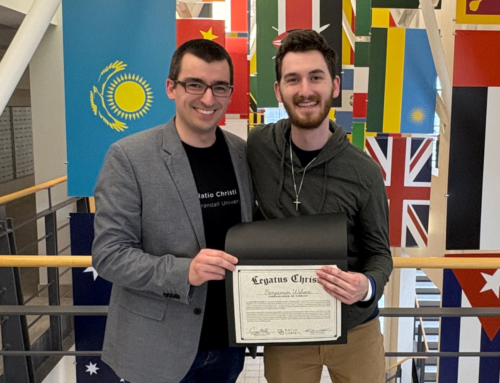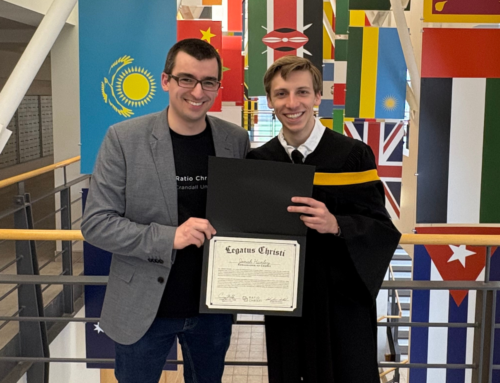
Nobody likes being treated with a cookie-cutter mentality, least of all those to whom we try to present and defend the gospel of Jesus Christ.
Put negatively, different people will have different barriers to faith needing to be addressed. Put positively, different people will find certain arguments and evidences for the faith, as well as certain ways of presenting it, more compelling than others. This is because different people are—you guessed it—genuinely different from one another.
Previously, we’ve looked at how we as Christians are to contextualize ourselves to others in such a way as to make them as receptive to the gospel as possible. In the context of evangelism and apologetics, this means tailoring our approach to each person or group we encounter without changing our message. In other words, we must learn to contextualize without compromise.
Now, this might sound great in principle, but what does this look like in practice? Well, frankly, it will entirely depend on the situation at hand. Let’s look to some biblical examples to illustrate the point.
A-Paul-ogetics
The apostle Paul has quite understandably been a central figure in the study of evangelism and apologetics. He spends much of his letters presenting the gospel from different angles and defending one aspect of the faith or another. We also have some summaries of his sermons and public defenses of the faith preserved for us in the book of Acts.
Throughout his missionary journeys and writings, Paul truly modeled what it means to become “all things to all people” for the sake of the gospel (see 1 Cor. 9:19-23).
We see throughout the book of Acts and are told explicitly in Acts 17:2 that in order to reach the Jews, Paul regularly visited them in their synagogues. He would sit down with them for the public readings from the Old Testament Scriptures and would then stay to converse with those in attendance, reasoning with them from those same Scriptures that Jesus is the Messiah/Christ of whom they foretold.
When witnessing to the pagans in Acts 14:15-17, Paul and Barnabas used nature—the very object of the pagans’ worship—to point them to the one true God. They pointed to God’s revelation of himself in creation so as to undercut the worship of worthless idols and call the pagans to turn to the living God.
In Acts 17:18-34, when he caught the attention of the Epicurean and Stoic philosophers, Paul accepted the somewhat pointed invitation to present the Christian faith to them to a greater depth in the more formal setting of the Areopagus. In what was basically the equivalent of a university lecture theatre, Paul made philosophical and anthropological arguments highlighting the folly of idolatry and the coming judgment.
Paul adapted his presentation and defense of the faith to whomever he was trying to reach in any given situation depending on what respective barrier stood in the way between them and the gospel. He pointed the pagans to the one true God’s revelation in nature, the Jews to the Scriptures that point to Jesus, and the Greek philosophers to the truth of the Christian worldview. In each case, the gospel message remained the same, but the way he brought people to it changed on a case-by-case basis.
But Paul wasn’t the first to contextualize without compromise. After all, immediately following his instructions to believers to contextualize oneself to others for the sake of the gospel, he says, “Be imitators of me, as I am of Christ” (1 Cor. 11:1).
Jesus Did It First
Jesus is widely recognized by Christians and non-Christians alike as being an effective speaker and skillful teacher. Not surprisingly, he sets a great example of how to tailor one’s presentation and defense of the gospel to different contexts.
In reasoning with the Jewish people, Jesus would repeatedly point them to their own Scriptures to show that they were about him (e.g., Luke 24:27; John 5:46). And in teaching about himself and his kingdom through his parables, he would use characters, settings, and situations that the people could relate to and would use theological imagery they would recognize from the Scriptures.
In addressing the educated, religious elite, Jesus would focus on their opposition to him. He would often use logical arguments to poke holes in their objections to his teachings and ministry (e.g., Matt. 12:1-32; 22:23-33) and would use Scripture to challenge their misconceptions about the Messiah/Christ (e.g., Matt. 22:41-46).
And in standing before a ruler like Pilate, Jesus reasoned with him that his kingdom is not of this world (John 18:33-37) and reminds him that God is the one in control of all things, not Pilate or anyone else (19:10-11). (One can only hope that this caused Pilate to rethink his place in the grand scheme of things.)
These are only a few examples, but you get the picture. Evangelism and apologetics aren’t meant to be done with a cookie-cutter approach. True, the gospel message and the truths surrounding it never change. However, the ways in which we present them and the specific barriers to faith needing to be addressed are context-dependent.
Follow the Leader
Jesus and Paul both serve as excellent examples of how to tailor one’s gospel presentation and defense to different situations. We each need to learn to do the same (1 Cor. 11:1).
As best as we can, we need to get to know the person or group we’re trying to reach. This requires being relational.
We need to try and find out what particular issues they personally struggle with as barriers to faith in Christ. This requires being a good listener.
And once we’ve uncovered the barriers, we need to be willing to walk alongside the person and take the time to remove those barriers. This requires patience.
All this will take some work on our part as Christians, and some may find it at times to be a bit of a daunting task. But if even one person comes to Christ through our efforts, is it not all worth it? That, my friend, is the spirit of Paul’s words in 1 Corinthians 9:22: “I have become all things to all people, that by all means I might save some.”
And if even one person comes to salvation through our contextualized presentation and defense of the gospel, then there’s cause for great celebration indeed (Luke 15:7, 10).



